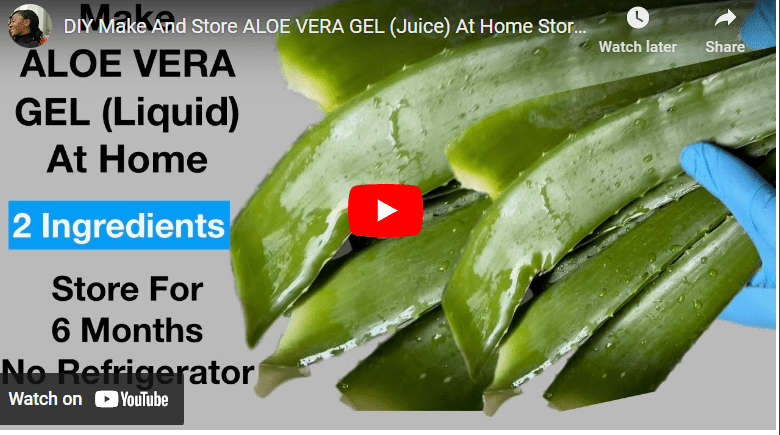Garri is a staple food in West African cuisine, and its popularity continues to grow beyond the region. It is a fine to coarse granular flour made from cassava that can be enjoyed as a meal on its own or used as a primary ingredient in other dishes.
Garri processing has the potential to not only provide food security but also create economic growth opportunities for individuals and communities. However, processing cassava to garri requires specific techniques and knowledge to ensure that the final product is of high quality and safe for consumption.
Here is a quick summary on how to Process cassava to garri which is a straightforward process that can be done at home or on a larger scale for commercial production. Start by harvesting cassava root and washing it to remove any dirt. Peel the cassava, then grate the root into small pieces which can be done by garri grinding machine.
Then, place all the grounded mesh in a sack, and tie the mouth after which it is placed on a jack, or better still a machine that helps drain the water. After 3 to four days of draining, you may now start frying the garri on a hot frying pan.
How To Process Cassava to Garri Step By Step Guide
If you love eating garri and want to up from buying to producing yours, then this is the right content to be reading. Ensure you follow the step below to learn all that you need to know about processing cassava to garri.
Read Also: How To Process Cashew Nuts At Home
Stage 1: Source for Cassava
If you want to process cassava to garri, the first step is to ensure that you have the right variety of cassava.
Not all cassava varieties are suitable for making garri, so you need to choose the right one.
You can harvest your cassava when it is mature, which is usually after 12 to 18 months of planting. You can tell that cassava is ready for harvesting when the leaves turn yellow, and the roots are large enough.
Read Also: How To Process Coconut Oil
Also, you can source for cassava by purchasing from local markets or online through grocery ecommerce platforms.
Stage 2: Preparation
After sourcing your cassava, then comes the preparation stage.
Step 1: Peeling off the Outer Layer
You need to remove the outer layer of the cassava roots. You can do this by using a machete or a sharp knife to peel off the outer layer.
Step 2: Sorting and Washing Cassava
Once you have peeled off the outer layer, sort the cassava to remove any rotten or diseased roots. Then, wash the cassava thoroughly to remove any dirt or debris.
Read Also: How To Process Maize Into Flour
Step 3: Cutting Cassava
After washing, cut the cassava roots into small pieces. You can do this manually using a knife or a mechanical grater.
Step 4: Soaking Cassava
Soak the cassava pieces in water for 1-2 days to soften them. This makes it easier to grate the cassava and extract the pulp.
Read Also: How To Process Pepper
Stage 3: Grating and Pressing
After preparing the cassava, the next step is to grate and press it to extract the pulp. Here are the steps involved in grating and pressing cassava:
Step 1: Grating Cassava
Grate the soaked cassava pieces using a mechanical grater or manually using a grater made of perforated metal or woven wire. This will create a pulp that can be used to make garri.
Read Also: How to Process Millet into Flour
Step 2: Pressing Cassava
After grating, you need to extract the water from the pulp by pressing it. There are two methods of pressing cassava – manual and mechanical.
Manual Pressing
Put the pulp in a bag made of a porous material such as jute, cotton, or nylon. Squeeze the bag with your hands or using a press to extract as much water as possible.
Mechanical Pressing
Use a hydraulic or screw press to extract the water from the pulp. This method is more efficient than manual pressing and produces a higher yield of garri.
Stage 4: Fermentation and Roasting
Fermentation and roasting are critical steps in the processing of cassava to garri. Here are the steps involved in fermenting and roasting cassava:
Read Also: How To Process Okpa Flour
Step 1: Fermenting Cassava
After pressing, put the pulp in a bowl, basket, or container and cover it with water. Leave the mixture to ferment for 2-3 days, stirring occasionally. This will reduce the cyanide levels in the pulp and improve the flavor.
Step 2: Roasting Cassava
After fermentation, you need to roast the pulp to produce garri. There are several methods of roasting cassava, including:
#1. Frying Method
Heat oil in a deep-frying pan or pot and fry the fermented pulp until it turns golden brown. This method produces garri with a crispy texture.
Read Also: How To Process Palm Kernel Oil
#2. Oven Baking Method
Spread the fermented pulp on a baking sheet and bake in an oven at 250-300°F (120-150°C) for 1-2 hours, or until it is dry and crispy. This method produces garri with a crunchy texture.
#3. Open Fire Method
Spread the fermented pulp on a metal plate or pan and roast over an open fire, stirring frequently until it is dry and crispy. This method produces garri with a smoky flavor.
Step 3: Sieving Garri
After roasting, sieve the garri to remove any lumps and obtain a fine to coarse granular flour.
Stage 5: Packaging and Storage
Packaging and storage are essential to ensure that garri maintains its quality and freshness. Here are the steps involved in packaging and storing garri:
#1. Packaging Garri
After sieving, put the garri in clean, dry bags made of plastic or paper. You can also package garri in plastic containers with lids. Make sure to label the bags or containers with the date of production and expiry.
#2. Storage Garri
Store garri in a cool, dry place away from direct sunlight and moisture. Exposing garri to moisture can cause it to spoil, while exposure to sunlight can reduce its nutritional value.
#3. Monitoring Garri
Check the garri regularly for signs of spoilage, such as mold or an unpleasant smell. If you notice any signs of spoilage, discard the garri immediately.
#4. Re-packaging Garri
If you plan to store garri for an extended period, you can repackage it every few months to ensure that it stays fresh.
Below Is A video Demonstrating this Processing:
Benefits of Processing Cassava to Garri
There are several benefits to processing cassava to garri, including:
- Nutritional value: Garri is a rich source of carbohydrates, fiber, and some essential minerals such as iron, zinc, and calcium.
- Long shelf life: Properly processed and stored garri can last for up to six months or longer, making it an ideal food source for communities with limited access to fresh produce.
- Income generation: Processing cassava to garri can be a source of income for farmers and processors, who can sell their products locally or export them to other countries.
- Versatility: Garri can be eaten as a snack, a side dish, or as a main meal when mixed with soup or stew.
Challenges of Processing Cassava to Garri
Despite the benefits of processing cassava to garri, there are also some challenges, including:
- Cyanide toxicity: Cassava contains cyanide, a toxic compound that can cause health problems if consumed in large quantities. Proper processing, including soaking, pressing, fermenting, and roasting, is required to reduce cyanide levels to safe levels.
- Labor-intensive: Processing cassava to garri is a labor-intensive process that requires a significant amount of time and effort.
- Equipment and infrastructure: Some of the processing equipment, such as graters and presses, may be expensive and require access to electricity or other infrastructure.
Where to Sell Garri?
There are several options for selling garri, including:
#1. Local Markets
Garri can be sold in local markets and to small-scale retailers.
#2. Online Marketplaces
Farmers and processors can also sell their products through online marketplaces and e-commerce platforms.
#3. Export
Garri can be exported to other countries, especially in West Africa, where it is a popular food item.
Tips for Processing Cassava to Garri
Here are some tips for processing cassava to garri:
#1. Use Fresh Cassava
Cassava deteriorates quickly, so it is essential to use fresh cassava for the best quality garri.
#2. Proper Processing
Proper processing, including soaking, pressing, fermenting, and roasting, is required to produce high-quality, safe garri.
#3. Hygiene
Maintaining good hygiene practices, such as washing hands and equipment, is crucial to prevent contamination and spoilage.
#4. Storage
Proper storage of garri is essential to maintain its quality and freshness.
Best Practices for Processing Cassava to Garri
Here are some best practices for processing cassava to garri:
#1. Start With Good Quality Cassava
Use fresh, high-quality cassava for the best quality garri.
#2. Use Proper Processing Techniques
Follow the proper processing techniques, including soaking, pressing, fermenting, and roasting, to ensure safe and high-quality garri.
#3. Maintain Good Hygiene Practices
Keep equipment and working areas clean and follow good hygiene practices to prevent contamination and spoilage.
#4. Monitor For Spoilage
Check the garri regularly for signs of spoilage, such as mold or an unpleasant smell, and discard any spoiled products immediately.
#5. Proper Storage
Store garri in a cool, dry place away from direct sunlight and moisture to maintain its quality and freshness.
Cassava Processing Pdf
A cassava processing PDF is a comprehensive guide that outlines the various steps involved in processing cassava into different food products, including garri, flour, and cassava flakes. The guide typically includes detailed instructions, illustrations, and tips to help farmers and processors produce high-quality products that are safe to consume.
Processing Of Cassava Into Flour
Processing cassava into flour is a popular way to preserve the root crop and extend its shelf life. The process involves peeling, washing, grating, and drying the cassava before milling it into a fine powder. Cassava flour is gluten-free and can be used as a substitute for wheat flour in many recipes.
How To Process Yellow Garri
Yellow garri is a popular food item in West Africa, especially in Nigeria. The process for making yellow garri is similar to that of white garri, but yellow garri is made from yellow-fleshed cassava varieties. The cassava is peeled, grated, and fermented before being pressed, sieved, and roasted to produce the final product.
How To Make Cassava Flakes
Cassava flakes, also known as garri Ijebu, is a crunchy snack that is made from cassava. The process for making cassava flakes involves grating the cassava, fermenting it, and then sieving and drying the cassava to produce thin, crispy flakes. Cassava flakes can be eaten as a snack or used as a topping for soups and stews.
Cassava Processing
Cassava processing involves the various techniques used to transform the cassava root into different food products. These techniques include grating, fermenting, pressing, sieving, and roasting. Cassava can be processed into a range of products, including garri, flour, cassava flakes, and cassava starch.
Garri Production And Packaging
Garri production involves several stages, including peeling, washing, grating, fermenting, pressing, sieving, and roasting. Once the garri is ready, it is packaged in bags or containers for storage and distribution. Proper packaging is essential to maintain the quality and freshness of the garri and to prevent contamination.
What Can Cassava Be Processed Into
Cassava can be processed into a wide range of food products, including garri, flour, cassava flakes, cassava starch, and tapioca pearls. In addition to food products, cassava can also be used to make animal feed, biofuels, and industrial products such as glue and textiles.
Fermentation Process Of Garri
Fermentation is an essential step in the production of garri. The fermentation process helps to reduce the cyanide content of cassava, making it safe to consume. During fermentation, the cassava is soaked in water for several days to allow natural lactic acid bacteria to break down the cyanide compounds.
How To Make Cassava Flakes
To make cassava flakes, the cassava is grated and fermented before being sieved and dried to produce thin, crispy flakes. The fermentation process helps to break down the cassava and improve its nutritional value. Once the cassava flakes are dry, they can be stored and used as a snack or as a topping for soups and stews.
Conclusion
The processing of cassava to garri is an essential part of West African cuisine and provides economic opportunities for communities. With the proper techniques and knowledge, individuals can produce high-quality garri that is safe for consumption and has a long shelf life.
By sharing this knowledge and encouraging more people to learn how to process cassava to garri, we can increase food security and promote economic growth in the region and beyond.



